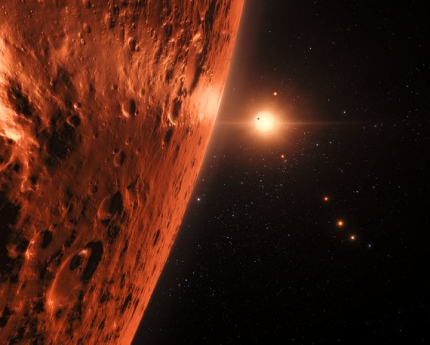
Of all the systems found to have planets in the habitable zone, none has generated more excitement than TRAPPIST-1. Earlier this year, scientists announced that three of the system’s seven planets are in the habitable zone. These planets orbit a star that is smaller and far cooler than our sun.
Now, an international team of astronomers using the Hubble Space Telescope believe the system’s outer planets might have “substantial amounts of water,” according to a news release on the Hubble website. “This includes the three planets within the habitable zone of the star, lending further weight to the possibility that they may indeed be habitable.”
To date, TRAPPIST-1, an ultra-cool dwarf star, is the system with the largest number of Earth-sized planets. An international team of scientists used an instrument on the Hubble, the Space Telescope Imaging Spectrograph, to study ultraviolet radiation received by the system's planets, according to the news release. Ultraviolet starlight can break water vapor in a planet’s atmosphere into hydrogen and oxygen. (Water contains two parts hydrogen to one part oxygen.)
The "habitable zone” of a solar system is the distance of a planet from its star --which varies depending on the star's strength -- that determines whether the planet might be suitable for water. But scientists also say some planets thought to be in the habitable zone may not support life because of stellar eruptions spewing stellar material and radiation out into space, according to a NASA news release. " As a result, high-energy particles can drag atmospheric molecules -- such as hydrogen and oxygen -- into space."
The innermost TRAPPIST-1 planets, which are closest to the sun, may have lost massive amounts of water, but the outer planets could still have water on the surface. Scientists are not drawing final conclusions, however. The James Webb Space Telescope, set to launch in 2018, could provide more information. The solar system is in the constellation of Aquarius. It is named for The Transiting Planets and Planetesimals Small Telescope (TRAPPIST) in Chile.
Related:
Neighboring exoplanets locked in orbit
Scientists find seven planets around one star
Follow StudyHall.Rocks on Twitter.
If you would like to comment, give us a shout, or like us on Facebook and tell us what you think.